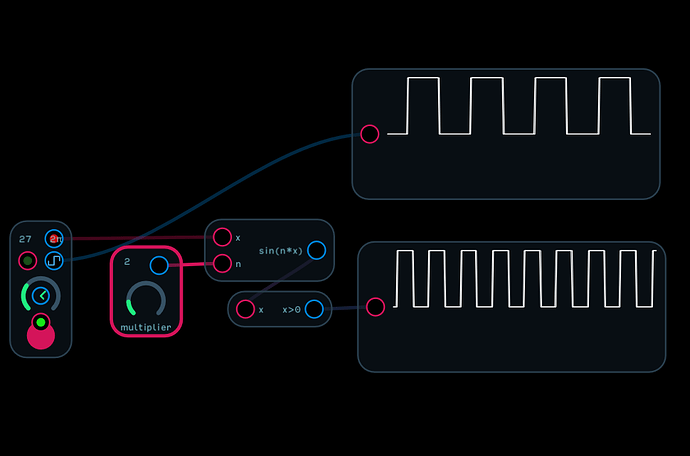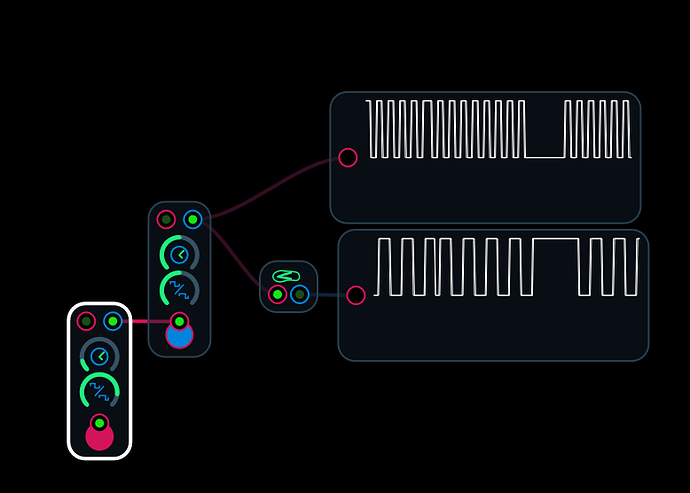I’ve been working on making my own noisy/industrial version of a drum machine, but I’m coming to a wall in trying to achieve durations above 8th notes. I’m assuming that I’d have to use a ton of flip-flops and keep the BPM really high, but I wanted to see if there were other options as well.
Cheers!
Clock multiplying with the sine function.audulus (13.9 KB)
If you use the phasor node inside the clock module you can make multiples of the frequency with the sine function. This is really only true of integer multiples but you get some pretty interesting rhythmical results if you take intermediate values.
Here’s a little patch I made showing what I’m talking about.
sine beats.audulus (522.9 KB)
Also: check out the KEG, it probably does a lot of the stuff you are looking to create in a tidy little package.
https://discourse.audulus.com/t/keg-klockable-envelope-generator/818?u=robertsyrett
2 Likes
Sweet! Thank you! I personally have tried to stay away from multipliers due to their tendency to need to be reset, but I’ll definitely check all this stuff out!
1 Like
The sine function method is only active when it is receiving a clock, so t won’t need to be muted or anything (like the library multiplier) when the clock is off and it won’t stay high like flip flops can, so it has a lot of upsides.
2 Likes
Hm…that’s interesting. Also: what do you mean when you say that flip flops “stay high”? Just curious.
1 Like
The flip flop can stay at a 1value, it won’t automatically return to zero automatically when you stop the master clock.
But you can use a mute signal to stop that behavior if you need to.
muting a flip flop.audulus (25.6 KB)
2 Likes
Haha  It definitely sounds like that huh!
It definitely sounds like that huh!


 It definitely sounds like that huh!
It definitely sounds like that huh!